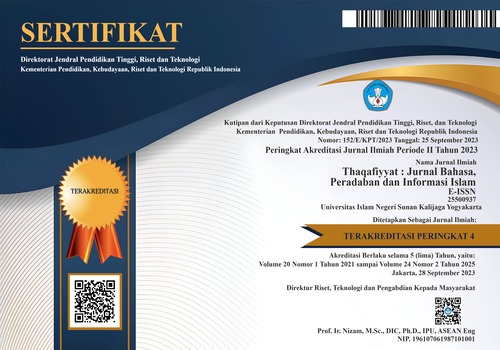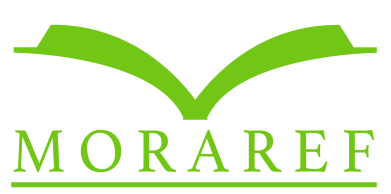NYADRAN SEBAGAI REALITAS YANG SAKRAL: PERSPEKTIF MIRCEA ELIADE
Abstract
The Modernists believe that human can only build himself thoroughly when he practices desacralization towards himself and moves to something profane, while the Traditionalists maintain that they are open for something sacred and should even achieve the stage of hierophanny that reveals chastity and eternity. This article explores the latter, however. It attempts to elaborate Eliade’s thought on a tradition in Java, namely Nyadran—one of the religious rituals or ways to respect and celebrate the spirits—as it presents the manifestation of the sacred or what Eliade calls as hierophanny. It discusses first about Mircea Eliade, particulary the critics and analysis on his works as well as the explanation on his views on the sacred and the profane and also on the myth and symbol; it then discusses Nyadran ritual itself in relation to Eliade’s conception.
Keywords: sacred, profane, nyadran, symbols, myths
Downloads
Downloads
Published
Issue
Section
License
Authors who will publish with this journal agree to the following terms:
- Thaqafiyyat: Jurnal Bahasa, Peradaban dan Informasi Islam publishes all articles entirely in full text.
- It is permissible for readers to download and to use it for scientific purposes and scientific dissemination.
- Authors retain copyright and grant the journal right of first publication with the work simultaneously licensed under a Creative Commons Attribution License that allows others to share the work with an acknowledgement of the work's authorship and initial publication in this journal.
- Authors are able to enter into separate, additional contractual arrangements for the non-exclusive distribution of the journal's published version of the work (e.g., post it to an institutional repository or publish it in a book), with an acknowledgement of its initial publication in this journal.
- Authors are permitted and encouraged to post their work online (e.g., in institutional repositories or on their website) prior to and during the submission process, as it can lead to productive exchanges, as well as earlier and greater citation of published work.










